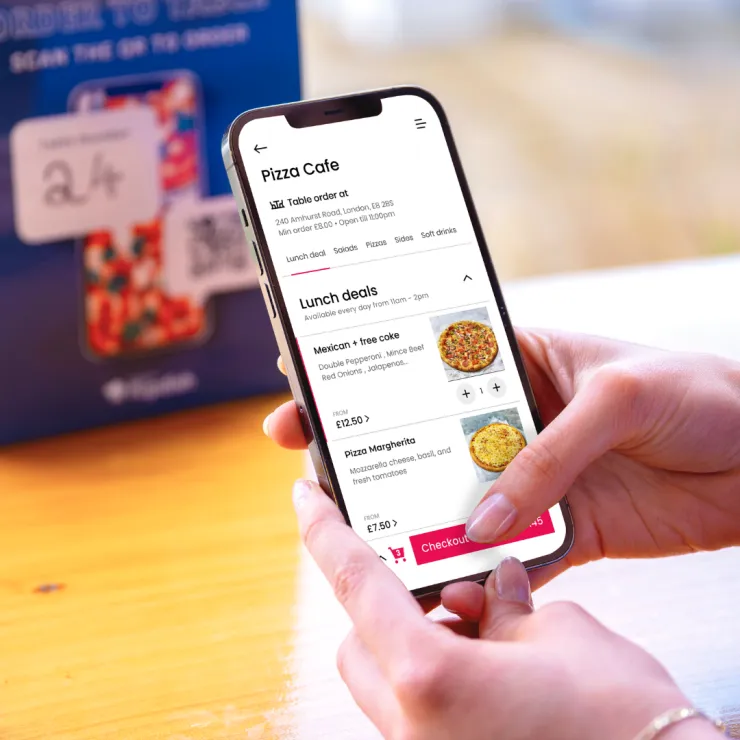Many hospitality owners were recently burned by second-rate QR Code Order & Pay technology. As table service became the norm — and in some countries the law — business owners needed help, and fast.
Unfortunately, this caused a QR Code Order & Pay app gold rush. Really, anyone can create a QR code and upload a PDF to a landing page, and these rushed solutions meant bad tech, a poor experience, plus time and money wasted. Good QR Code Order & Pay allows customers to view the menu, order and pay all online in advance, while also synching with your existing POS system.
As a result, many hospitality owners and managers are now in a technology no man’s land. They have returned to traditional methods of table service, even though they are already squeezed between customer demand and staff shortages.
There is no need to compromise. In this blog, we address some of the myths around table service technology.
1. Table service technology is unreliable and awkward
This one is actually true for some of the rushed technologies mentioned earlier, but well-established providers ensure their technology is reliable and intuitive. When trialing a QR Code Order & Pay provider, review their customer case studies, look at who else they have on their books, do a demo and talk to your peers. A little scratching beneath the surface will quickly reveal shoddy technology.
A good QR Code Order & Pay offering will allow customers to not only view the menu, but add items to their basket, view meal deals, add sides and drinks, plus order and pay with a digital wallet like Google Pay and Apple Pay.

2. The kitchen will be overwhelmed by orders
When choosing your QR Code Order & Pay technology provider, ask about Order Throttling. If your kitchen is under pressure, Order Throttling allows you to space out orders so staff won’t be overwhelmed. Well-designed table service technology improves operational efficiencies. One Flipdish customer, the Beaumont Arms, manages to serve 640 outdoor seats from one small bar.
“A lot of publicans have come in to see how I'm doing it and they think I'm absolutely bonkers with the amount of tables I have outside and the world's smallest bar. Flipdish help us do that.”

David Robertson
Owner Beaumont Arms, Huddersfield, UK
3. My staff won't have anything to do
It’s true that QR Code Order & Pay frees up floor staff from some administrative tasks. Instead of dropping off menus, explaining menu items, confirming quantities and taking payments, staff are available to focus on other tasks that help provide an excellent customer experience. There is always something to be done in a hospitality business. Meeting and greeting guests, taking details for your contact tracing list, answering questions and turning over tables can all be given more attention when QR Code Order & Pay is in place.

4. Customers will miss the personal service and interaction
Some customers will never warm to app or website-based ordering out of home. And that’s understandable. QR Code Order & Pay disrupts habits created and lived over a lifetime. You can provide a mix. In a recent Flipdish survey 80% of pub-goers wanted pubs to keep digital ordering systems even after guidelines change. While in Ireland, a recent CGA Reach survey on consumer behaviour cited that 41% now prefer to book, order and pay through technology.
QR Code Order & Pay doesn’t mean sterile service. With staff freed up from administrative tasks like inputting orders into your POS system and taking payments, servers actually have more time to be attentive to customers. From meeting and greeting, serving water, periodically checking in, and dealing with dissatisfied patrons, staff have more time to spend improving the overall customer experience.
It may sound like a leap for some, but look at other industries as a guide. In banking, for example, ATM machines and online banking have reduced footfall on-site. They have increased efficiencies and completely changed consumer habits of a lifetime.
5. I'll need to throw out my menus
Traditional printed menus are becoming less common, a trend vastly accelerated by COVID-19. QR code menu ordering means less physical touchpoints, less waste and quicker service. However, It's always good to have some printed or laminated menus available for customers who request them, so certainly don’t throw them away.


